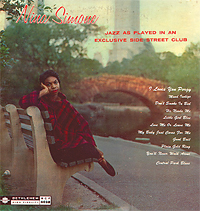There is a word in German for a tune that gets lodged in your  memory—Ohrwurm; literally translated it is “earworm.” I woke up one morning with the simple piano introduction to Nina Simone’s version of the Rogers and Hart song “Little Girl Blue” dominating my thoughts, and weeks later I realized it had become more of an ear-caterpillar.
memory—Ohrwurm; literally translated it is “earworm.” I woke up one morning with the simple piano introduction to Nina Simone’s version of the Rogers and Hart song “Little Girl Blue” dominating my thoughts, and weeks later I realized it had become more of an ear-caterpillar.
First, I decided to try to play the tune by ear on my cello, which is not an ability I have. But it is such a basic tune, and there was no one to witness me struggling to find the notes, so I tried. A few days later, I was still thinking about it, and confessed my obsession to a musician friend. She didn’t know the song, but when I played it for her, she recognized the intro tune as a Christmas carol called “Good King Wenceslas.”
I became curious, and listened to not only Nina Simone’s and Janis Joplin’s versions, which I already loved, but to more than a dozen different recordings. I also did research on the original Rogers and Hart text. I was amazed by how the song withstands adaptation and what a good vehicle it is for such a variety of voices. It never fails to move me.
Both Joplin and Simone chose to eliminate the opening lyrics and improvise on and deepen the chorus.
Sit there and count your fingers, what can you do?
Old girl you are through.
Sit there and count your little fingers unlucky little girl blue.
Sit there and count the raindrops falling on you.
It’s time you knew, all you can count on is the raindrops that fall on little girl blue.
Adding the “Good King Wenceslas” melody to the beginning of the song was Simone’s idea. The melody evokes childhood as if an ice cream truck were approaching, and is powerfully juxtaposed against her contralto voice asking, “What can you do? Old girl, you’re through.” Joplin adds her own line to the chorus: “I know just how you feel,” hauling compassion from the subtext into the open space where I am listening, which not only moves me to care about the girl, but also comforts me somehow.
Ultimately, the question curled in my mind is, Why couldn’t a song be a living thing? It seems to be at least as alive as a cactus, and when great musicians breathe into the body of a song, I am more aware of my own spirit in its chrysalis.